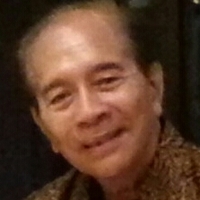Papers by satish kumar yadav

Physical Review B
Optical control and switching of domain configuration are intriguing to overcome the sluggish tim... more Optical control and switching of domain configuration are intriguing to overcome the sluggish time response, hysteresis, and Joule heating losses present in conventional methods where resistive contacts are involved. The effective optical control of the domain configuration has remained challenging and far from fully understood. It has been reported that light polarization can be used to control the domain configuration in BaTiO 3 , however, without much focus on origin of its mechanism. By combining the experimental techniques that are sensitive to the local and average crystal structure and to electric polarization and electronic structure, we detect and demonstrate the optically guided variations in the domain configurations of BaTiO 3 and show that the strain field generated through the bulk photovoltaic effect plays a key role in domain reconfiguration. Complete mechanism of reversible domain control via light polarization is discussed.

African Journal of Biotechnology, 2012
In Mexico, corn is widely cultivated and frequently parasitized by Ustilago maydis, a basidiomyce... more In Mexico, corn is widely cultivated and frequently parasitized by Ustilago maydis, a basidiomycete dimorphic fungus that causes the disease known as corn smut. It is widely consumed and is considered a culinary delight. From a biotechnological perspective, U. maydis offers the possibility as a producer of various metabolites, such as laccase and tyrosinase enzymes, glycolipids, and indole derivatives that can be used in pharmaceutical, cosmetic and food, due to its safety. The exopolysaccharides (EPS) are extracellular sugar compounds synthesized by a variety of microorganism and have shown various properties and applications. Among them are the improved rheology, texture, stability and mouthfeel of fermented dairy products. In addition, these compounds have shown biological activity as an antitumor agent, immune-stimulating and reducing blood cholesterol. The production of EPS by U. maydis was studied by culturing the cells in yeast extractpeptone-dextrose (YPD), YPD supplemented with CuSO 4 (YPD T), Czapek Dox-sucrose, Czapek Doxglucose, Czapeck Dox culture media with corn steep liquor and in another media containing high oil oleic sunflower as the sole carbon source. The presence of activity of glycosyltransferase by sodium dodecyl sulfate-polyacrylamide gel electrophresis (SDS-PAGE) was detected as well as the polymers formed by dinitrosaliscilic acid (DNS). The products of fermentation were characterized by enzymatic hydrolysis using carbohydrases, gel permation chromatography and atomic force microscopy.









Uploads
Papers by satish kumar yadav